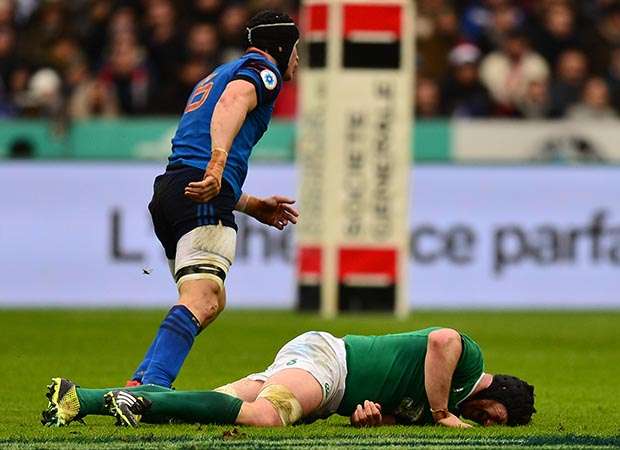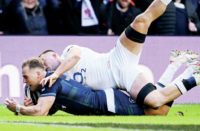 Injuries, injuries and more injuries. What is it about today's game that is causing more and more players to miss game time? As amateurs, we would sometimes play three games a week and while the professional game can boast bigger hits come tackle time, the lineouts, rucks, mauls and scrums were far more bruising affairs then than the current incarnations.
Injuries, injuries and more injuries. What is it about today's game that is causing more and more players to miss game time? As amateurs, we would sometimes play three games a week and while the professional game can boast bigger hits come tackle time, the lineouts, rucks, mauls and scrums were far more bruising affairs then than the current incarnations.
Added to that, the players are now professionally managed in terms of fitness and rest during the pre and post-match periods, which should reduce the risk of injuries. Yet, the Six Nations has been blighted by the number of injuries that have befallen all the teams.
It not just internationals, the Premiership seems awash with injured players and, although it's hard to know if this was always the case, I am pretty sure that only the most serious of injuries were catalogued in the amateur days, anecdotally it would seem to be a growing problem.
Leicester's Ed Slater told The Rugby Paper last week that he believes that artificial pitches are having an impact and there should be more research into the injury potential of these pitches and I think he is right.
Over the years there have been a number of experiments of playing the game on artificial surfaces – but all ended badly with players suffering a range of injuries, including plastic friction burns on exposed skin and joint injuries.
When artificial surfaces were first tried, players quickly learned that they could not play without wearing track suit bottoms or boots with blades instead of studs.
The blades were plastic ridges formed on the sole of the boot that gripped on artificial surface but didn't penetrate like studs and whilst good for backs, they were no use for forwards in scrums etc. The modern artificial surfaces are a long way removed from the ‘plastic grass' of the past but still cause some very familiar problems.
One obvious result of an artificial surface is the improved grip which can cause injuries by holding firm where natural grass pitch surfaces would flatten and tear under the pressure of a tackle whereas the pressure is passed on to ankle and knee joints with an artificial surface.
Another potential cause of injuries could be something that on the face of it should reduce the chances of them occurring: substitutes.
On average, (excluding injury) substitutes are being brought into the game after roughly 50 minutes by coaches who hope to effect a change within the game. A change that can be anything from an increase in tempo to replacing a failing player but the one thing each of the eight substitutes will bring is the adrenaline rush that all players experience at the start of their game.
At the beginning of a game all the players are fit and raring to go, which explains the sometimes frantic chaotic ‘100 mile an hour' start – but that usually settles after around 10 minutes into a controlled, measured game.
The best teams are those that can reach that measured game quickest but still maintain the ferocity and intensity of the opening minutes. However, the impact of 50 minutes of intense rugby on the body may make it more susceptible to potential injury, despite the 10-minute half-time break. In fact, the length of the break could increase the risk of injury as muscles cool down and lactic acid builds.
Furthermore it is possible that substituting half the team in a series of waves may increase the risk of injury for the players that remain on the pitch.
When I played in the dark days of amateurism, substitutes weren't allowed and half-time breaks were two minutes – hardly time to suck a lemon let alone cool down – and yet during my time with England I can remember only two or three players ever being substituted through injury.
Back then it was an 80-minute game for 15 players which was a tactical battle of mind and body, where size and fitness were just two of the qualities needed to win a game. The matches were more like a game of chess where, sometimes, you would play for 60 minutes to gain dominance and control during the last 20.
The pressure on players who are tracked by GPS, knowing that if they don't get up and run but take a second to look around and ‘read the game' it may be translated as a sign of fatigue by a coach who might substitute them, is immense.
I am sure, even though it now seems the norm, no player would want to leave the pitch before the end of the match and the job is done, so they may be taking risks that if they had time to think they may not have and those risks could lead to injury.
It may just be a coincidence that there has been a steady increase in the number of injuries since the introduction of three tactical substitutes in 1996 to the eight we have now, but it may not.
More research will clarify the situation and you never know, it could be time to resurrect the 15-man game.


























